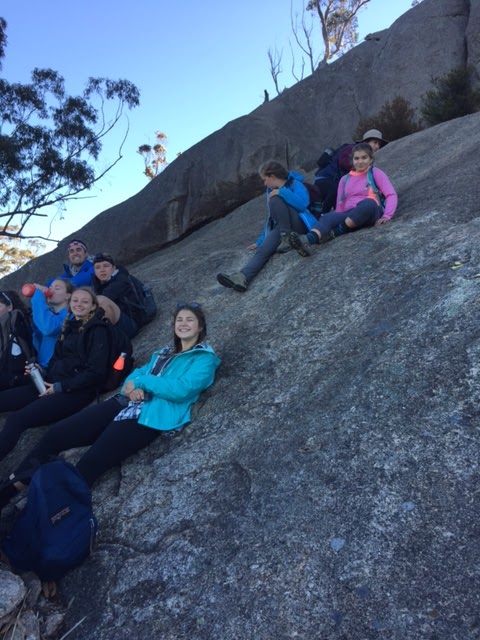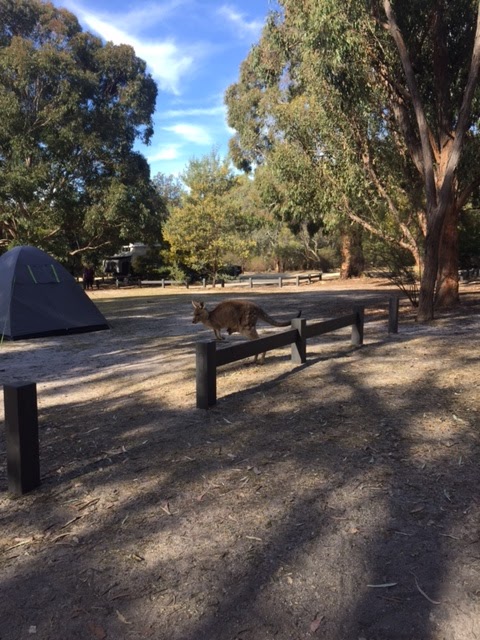Last week I was camping in Girraween National Park. When we got there, we unloaded the bus and pitched the tents. The tents were set up in rows of 4. On this trip, there were 3 professors, 1 "tutor", 25 college students, and 1 11-year-old girl (me). The professors were my mom and her colleague, but the third professor's name is John Hall. John Hall is the professor who gives all of the lectures on this trip. John Hall in a botanist which means he is a tree hugger. Just kidding, his studies plants and he teaches students about plants animals and fires in national parks. On this trip, we had a tutor/assistant named Sheree. Sheree was so cool, she studies microbiology and she is a volunteer firefighter. Sheree went on hikes with us and she even brought special cameras so that we could watch the possums walk around our camp kitchen at night! Every day in Girraween we would go on a hike. One of the hikes we went took us to Castle Rock, the Sphinx, and Turtle Rock. When we got to Turtle Rock we had the choice to go through Turtle Rock or just go back the way we came. The whole group chose to go through the Turtle. What I mean is we scrambled over and under 200,000,000-year-old granite rock, it was so much fun.
Girraween National Park is a 3-hour drive from Brisbane. Girraween is also part of the Granite Belt, which means that everything is made out of granite even the soil is made out of granite sand. The rock in Girraween is 200,000,000-years old, that means these rocks were around during the dinosaurs! Sheree told us how soil forms in the region. There are 2 different ways that soil forms from granite. The first way is when rainwater washes away tiny pieces of granite from the rocks and eventually forms a pile of sand. The second way is when algae and lichen are growing on the rock together. Algae and lichen have a symbiotic relationship, that means that they help each other thrive without taking more or less from one another. When lichen and algae grow together, they output an acid which decays the rock. When the rock decays, tiny loose pieces of granite come off and eventually turns into soil.
The quality of the soil that comes from this rock is very poor in nutrients. Not a lot of plants can grow in this kind of soil. The main things that grow in this soil are eucalyptus trees, banksia plants, acacia shrubs and different native grasses. Another plant that grows really well in this soil is the grapevine. That is why the Granite Belt region has a lot of vineyards that grow grapes and make wine. On the way back to Brisbane, we stopped at 2 wineries and got to hear about how they make wine. The students got to taste lots of different wine. My mom got me a box of lolli's since I couldn't drink the wine!
 |
| On top of Turtle Rock, this is a granite boulder. |
 |
| Invasion of the kangaroos in our campsite! |
 |
| Climbing the Pyramid with the students. |
 |
| Thumbs up! (under Turtle Rock) |
 |
| John Hall lecturing us in the freezing cold. |
Clio, sounds like you are having lots of fun. Your "reporting" is very engaging.
ReplyDeleteWas interested in the Turtle Rock; how big is it and how was it formed? Does it look like a turtle shell? Are you planing to make poems on Girraween?
Love, Papou.
PS: not hearing much from the boys! They must be having a "ball".
turtle rock was separated from a giant slab of granite a long time. It is huge and yes it looks like a turtle shell. Sadly I am not planing to make poems for Girraween. love you so much
Delete